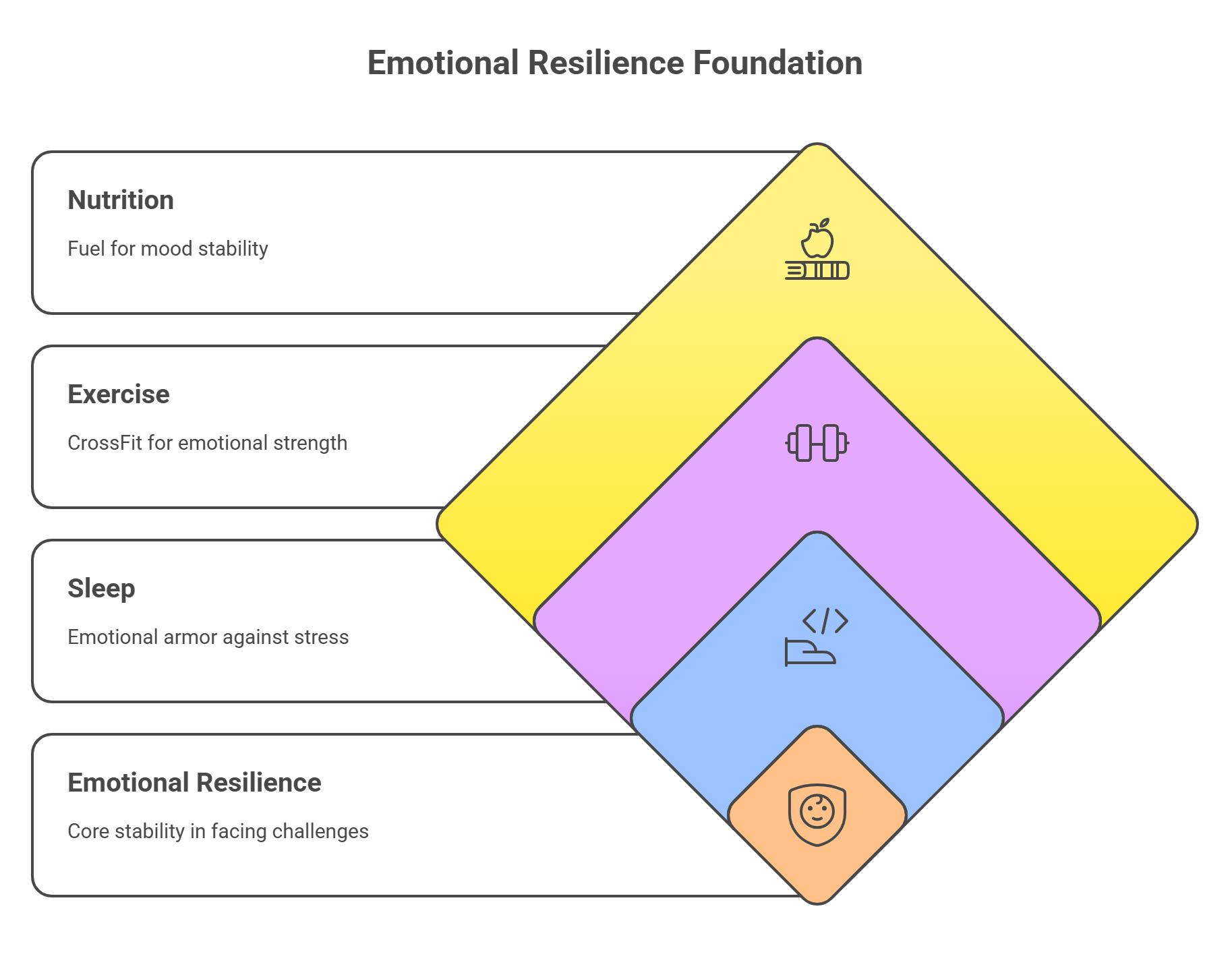
Stop the Emotional Rollercoaster: How to Build Resilience Instead of Just Reacting Your Way Through Life
Picture this: Your boss sends you a cryptic "We need to talk" text at 5 PM on a Friday, and suddenly your weekend plans involve spiraling through every possible doomsday scenario. Sound familiar? Welcome to the wonderful world of emotional reactivity—where our brains turn molehills into Mount Everest faster than you can say "catastrophic thinking."
If you've ever wondered why some people seem to glide through life's curveballs while others (perhaps yourself) feel like they're constantly dodging emotional fastballs, you're not alone. The secret isn't about avoiding stress—it's about building resilience instead of living in reactive mode.
What's the Real Difference Between Resilience and Reactivity?
Let's start with the basics. Emotional reactivity is like having your feelings on speed dial—every trigger gets an immediate, often disproportionate response. Research shows that emotional acceptance may be effective in diminishing emotional reactivity and physiological arousal in response to aversive emotions, suggesting there's a better way to handle our emotional responses.
Resilience, on the other hand, is your emotional shock absorber system. Resilience is the ability to adapt successfully in the face of stress and adversity. It's not about being emotionally numb or pretending everything's fine when it clearly isn't—it's about developing the mental flexibility to bounce back from setbacks without losing your marbles in the process.
Think of reactive people as emotional weathervanes, spinning with every gust of drama. Resilient folks? They're more like sturdy oak trees—they might sway in the storm, but they're not uprooting themselves every time the wind picks up.
The Neuroscience Behind Your Emotional Responses
Here's where things get fascinating (and slightly nerdy). Neuroscience has provided new insights and indicates that neurocognitive and neuroaffective factors, such as cognitive flexibility or reactivity to stress or reward may play a role in resilience.
When you're in reactive mode, your amygdala—your brain's alarm system—is essentially hitting the panic button before your prefrontal cortex (the rational thinking part) can even show up to the party. It's like having an overenthusiastic security guard who treats every minor issue like a full-scale invasion.
Dr. Tracey Marks, a renowned psychiatrist with over 20 years of experience, empowers people to take control of their mental health by understanding the mind-brain connection and how it is key to building resilience. In her YouTube video "Resilience vs. Reactivity: How to Take Control of Your Emotions," she explains how understanding these neural pathways can help us develop more adaptive responses to stress.
The good news? Your brain is remarkably plastic, meaning you can literally rewire it for resilience. Recent research into the neuroscience of resilience has been able to elucidate the brain structures that underlie resilience and identify strategies for supporting brain health and mental health across the lifespan.
The Hidden Costs of Living Reactively
Before we dive into solutions, let's talk about why reactive living is like emotional credit card debt—it might feel satisfying in the moment, but the interest rates are brutal.
Physical Toll: Constant reactivity keeps your nervous system in a state of hypervigilance. Your body can't tell the difference between a saber-toothed tiger and a passive-aggressive email from your coworker—it just knows "DANGER!" and floods your system with stress hormones accordingly.
Relationship Damage: When you're always in reactive mode, conversations become minefields. You end up responding to the emotional charge of a situation rather than the actual content, which is about as effective as trying to perform surgery with boxing gloves on.
Decision-Making Disasters: Ever make a choice you immediately regretted because you were fired up? That's your reactive brain making decisions with all the wisdom of a toddler who's had too much sugar.

Building Your Resilience Toolkit: Evidence-Based Strategies
1. The Pause That Refreshes
The simplest yet most powerful resilience tool? The sacred pause. When you feel that familiar surge of reactivity rising, create a moment of space between trigger and response. It can be as simple as taking three deep breaths or mentally counting to ten. This isn't about suppressing emotions—it's about giving your prefrontal cortex time to join the conversation.
2. Cognitive Reframing: Become Your Own Emotional Editor
Research shows that resilient function was associated with positive cognitive emotion regulation strategies, which could decrease the risk of suffering from mental disorders such as depression or anxiety. This means learning to question your initial interpretations of events.
Instead of immediately assuming that delayed response means someone is angry with you, consider alternative explanations. Maybe they're busy, dealing with their own challenges, or simply haven't seen your message yet. Revolutionary concept, right?
3. Mindfulness: The Art of Emotional Observation
Mindfulness isn't about achieving some zen-like state where nothing bothers you (though that would be nice). It's about developing the ability to observe your emotions without immediately acting on them. Think of it as becoming the narrator of your own emotional documentary rather than the star of an emotional action movie.
4. Build Your Emotional Vocabulary
The more precisely you can identify what you're feeling, the better you can manage it. Instead of just "stressed" or "upset," get specific. Are you frustrated, disappointed, anxious, or overwhelmed? Each emotion has different needs and responds to different strategies.
5. Practice Self-Compassion
Here's something that might surprise you: being kind to yourself isn't self-indulgent fluff—it's a resilience strategy backed by solid research. When you treat yourself with the same compassion you'd show a good friend, you're actually creating the psychological safety needed for growth and recovery.
The Physical Foundation of Emotional Resilience
Your emotions don't exist in a vacuum—they're intimately connected to your physical state. Dr. Tracey Marks shows how micro habits can act as mental armor, helping you build resilience and emotional stability through neuroscience-backed routines.
Sleep: Think of adequate sleep as emotional armor. When you're sleep-deprived, your emotional regulation abilities take a nosedive faster than a stock market crash.
Exercise: Regular physical activity isn't just good for your body—it's like CrossFit for your emotional resilience. It helps regulate stress hormones and builds your capacity to handle life's challenges.
Nutrition: Your brain needs fuel to function properly. Consistent blood sugar levels support stable moods, while the blood sugar rollercoaster of poor eating habits can amplify emotional reactivity.

Practical Daily Habits for Building Resilience
Morning Resilience Ritual
Start your day with intention rather than reaction. Before checking your phone (yes, before!), take five minutes to set an intention for how you want to show up in the world that day.
The Evening Review
End your day by reflecting on one moment when you responded rather than reacted, and one moment when you could have handled things differently. This isn't about self-criticism—it's about learning from experience.
Stress Inoculation
Gradually expose yourself to manageable challenges to build your resilience muscle. This might mean having difficult conversations you've been avoiding or trying something slightly outside your comfort zone.

When to Seek Professional Support
Building resilience is largely a DIY project, but sometimes you need to call in the professionals. If you find that your emotional reactions are consistently overwhelming, interfering with your relationships or daily functioning, or if you're struggling with persistent anxiety or depression, working with a mental health professional can provide you with additional tools and support.
Your Resilient Future Starts Now
The journey from reactive to resilient isn't about becoming emotionally bulletproof—it's about developing the flexibility to bend without breaking. It's about responding to life's challenges from a place of strength rather than fear, and building the emotional intelligence to navigate whatever comes your way.
Remember, the ability to self-regulate behavior is associated with high levels of resilience, and this is a skill that can be developed at any stage of life. Every moment offers a new opportunity to choose response over reaction, growth over stagnation, and resilience over reactivity.
Your future self—the one who faces challenges with grace, maintains relationships through difficult times, and sleeps peacefully knowing they can handle whatever tomorrow brings—is waiting for you to take that first step. The question isn't whether you can build resilience; it's whether you're ready to start today.
Medical Disclaimer: This article is for educational and informational purposes only and is not intended as medical or mental health advice. If you're experiencing persistent emotional difficulties, anxiety, depression, or other mental health concerns, please consult with a qualified healthcare professional or mental health practitioner for proper evaluation and treatment.
 Add Row
Add Row  Add
Add 




 Add Row
Add Row  Add
Add 

Write A Comment